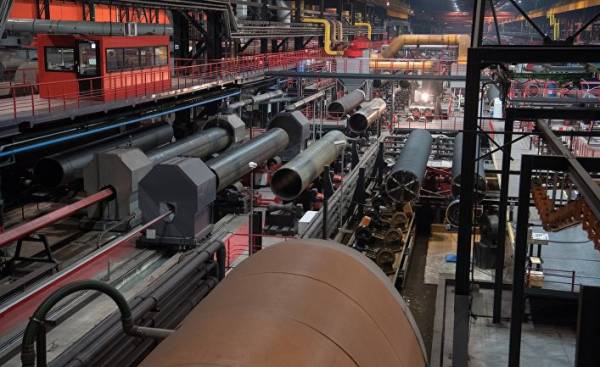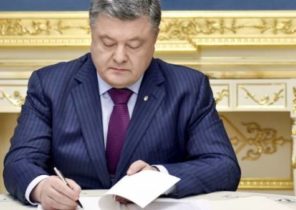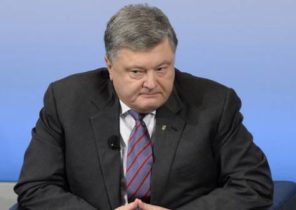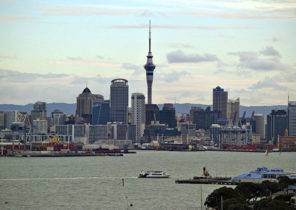
Controversial Russian energy project in Europe has experienced a series of political and legal barriers. But now the “Nord stream — 2” is intended for transportation of natural gas from Russia to Germany, faced with another potential problem. And this time it’s not the geopolitics, or the mysterious laws of the European Union and in the impact of the pipeline on the Russian reserve.
The pipeline begins in Kurgalsky reserve in the Leningrad region in the West of Russia. But the construction in the nature reserves of the Russian violates local and national laws and contrary to the Helsinki conventions of 1992, protects the Baltic sea, and the Ramsar Convention 1971 to protect wetlands. Coalition Clean Baltic sea, environmental protection, is worried that the pipeline will pass through “route, the most harmful to the environment”.
Perhaps Russia is and will not stop — but it may be a problem for some of the Scandinavian countries, through which water must pass pipeline. If Finland, Sweden and Denmark will promote this project, say experts on the environment, they deliberately violate the international environmental conventions.
“The Nordic countries do not want to politicize the permitting procedure, but when they are faced with evidence of violations of the environmental conventions, they will have to take this into account,” said Sijbren de Jong (Sijbren de Jong) of the Hague centre for strategic studies.
“Nord stream — 2”, the planned successor to the same pipeline, opened in 2011, was at the center of a massive political struggle leading to the split of European unity. The countries of Eastern Europe, especially Ukraine, Poland and the Baltic States, concerned that the project will double the grip of Moscow on the European market energy supplies. In the past, Moscow has used this leverage to intimidate its neighbors. The EU representatives said that the project will be detrimental to Ukraine, and contrary to the plans of Brussels on the diversification of energy sources.
Meanwhile, the countries of Western Europe, especially Germany, are open to the project, which they view as solely a commercial enterprise, and several Western European energy companies are willing to provide billions of dollars to make the pipeline a reality. The debate is exacerbated by the question of the need for additional tubing. The initial gas pipeline “Nord stream” is not used at full capacity, as European demand for natural gas is quite sluggish. Meanwhile, new sources of natural gas for Europe, including exporting liquefied natural gas from countries such as Qatar and the United States.
Gazprom, the Russian gas giant, said that the purpose of the project is purely commercial — it will supply large volumes of gas available right in the heart of Europe, and rejects the assumption that business deals worth some sneaky political game. But the project fits perfectly with Gazprom announced plans to bypass Ukraine, because Russian gas will supply the West, in Europe, the new transit route.
Until now, environmental issues were not the focus of the geopolitical debate, but the attitude to them emphasizes how political was the project, and how some EU members may find themselves in an uncomfortable position if they deliberately violate environmental laws, to promote the project.
Greenpeace Russia has promised to go all out to fight this project, but they stated that they ignore even EU members. “They ignored our warnings about this issue,” said FP Mikhail Kreindlin of Greenpeace Russia’s foreign policy. “The project is illegal, not only in accordance with the Russian legislation, but also with international law.”
Experts on environment and energy in Northern Europe are outraged not only by the fact that the project would affect the sanctuary. Concern is also caused by the impact assessment of the project on the environment, technical studies need to measure the area of the major construction projects before they begin. All governments participating in the project and the consortium, responsible for the “Nord stream — 2”, rely on the assessment of scientific consultants from Ramboll Group.
Ramboll Group presented an optimistic picture, saying that the project will have minimal impact on the environment mainly during the construction phase. But you should make a reservation: Gazprom, through the “Nord stream — 2”, funded environmental assessment of the Ramboll Group.
The representative of the Swedish Agency for environmental protection, told FP that the financing of the environmental assessment is a common practice for developers and government authorities review them and make your own conclusions, but only to its national territory. This means that Gazprom is the only party in the project, which ordered an assessment for the full project.
“It raises a lot of questions,” said Michael Durkin, Executive Secretary coalition “Clean Baltic”. “Now who can be an independent judge?”
“Nord stream — 2” has published the rating in April, governments and non-governmental organizations have until June to Express their opinion before the Russian government will make a final decision on whether to promote this project. Experts say that this is not enough time to conduct a full investigation or critical analysis of the report on 765 pages.
“The timing is just amazing,” said Anke Schmidt-Felzmann (Anke Schmidt-Felzmann), expert on Baltic sea region Swedish Institute of international Affairs, 2 may held a briefing in Stockholm. “All the participants will have very little time to answer. It’s just an unfair game,” she told FP.
Experts have found what they themselves called the large holes in the report on the impact on the environment. It argues that the chosen route is the best option to minimize damage to the environment — despite the fact that it will pass through nature reserve and other sensitive areas. This claim “was based on either falsified, incomplete, or simply ignored by the scientific data,” the report said CCB.
Ramboll Group did not answer the FP request for comment.
And although the planned operational life of the pipeline is 50 years and will expire in 2070, the assessment measures the impact only to 2035, which causes additional concern.
“When you take a closer look at the fine details in hundreds and hundreds of pages of files, you will find in the documents a lot of gaps and questionable assumptions,” Schmidt said, Felzmann. “I think it’s terrible.”
Criticism is not alarmed by the “Nord stream — 2”, which boasted on Twitter that “has no impact on the environment” as its ambitious gas pipeline in the Baltic sea:
#NordStream2 builds on #NordStream”s legacy: on time, within budget, no environmental impact https://t.co/NziWFxMf0i pic.twitter.com/yJL1BYi4rG
Nord Stream 2 Corp. (@NordStream2) may 5, 2017
The representative of the “Nord stream — 2”, told FP that “the project was selected based on evaluation of available alternatives and were optimized after considering the extensive environmental data obtained specifically for the project, both on-shore and offshore branches of the pipeline”.
“The project “Northern stream — 2″ will be implemented in accordance with the applicable legislation,” — said the representative.
In any case, the sponsors of the pipeline do not expect absolute approval to begin work. Regulatory authorities in Sweden and Finland has not yet approved permits for the project, but the construction work has already begun. For example, in March, “Nord stream — 2” declared the beginning of preparation of pipes for the project in Finland. On may 2 it was announced a major deal with a Swedish company. (These steps were taken a few months later, after the Ministers of foreign Affairs and of defence of Sweden jointly warned that “Nord stream — 2” is a real threat to the national security of Sweden).
“It’s real hypocrisy,” said Durkin from the coalition Clean Baltic sea. “You claim that you operate in accordance with international environmental standards, but you started the project even before any reviews”.
Experts and environmental observers are calm, although they know they face an uphill struggle with the geopolitical forces behind the project.
“The Nordic countries really are serious about the protection of the environment,” said Tim Boersma (Tim Boersma), expert at the Center on global energy policy at Columbia University. But as a precursor to the project “Northern stream — 1” was approved, despite concerns related to the environment, this issue probably will not be an obstacle for his successor, he told FP.
Meanwhile, environmental groups are hoping to put pressure on the “Nord stream — 2”, to at least remove the project from reserves. As reported by environmental observers, Russia’s legislators redraw the boundaries of the Kurgalsky nature reserve, near the starting point of the pipeline to try to circumvent environmental constraints.
Despite the fact that the “Nord stream — 2” has received funding from five European energy companies in the amount of approximately five billion dollars, according to reports, he is seeking additional funds from the International Finance Corporation (world Bank Group). But the world Bank has strict environmental standards when granting funds.
Coalition Clean Baltic sea and other groups plan to appeal to the division of the world Bank with a request to postpone or reschedule the project, but hopes are small.
“Many participants of the project say: “well, the Russians and the Germans want it. Who are we, the little people, to stop this?” Schmidt said-Feltsman. “There are more important things to do, and if they really want to, they’ll do it.”







